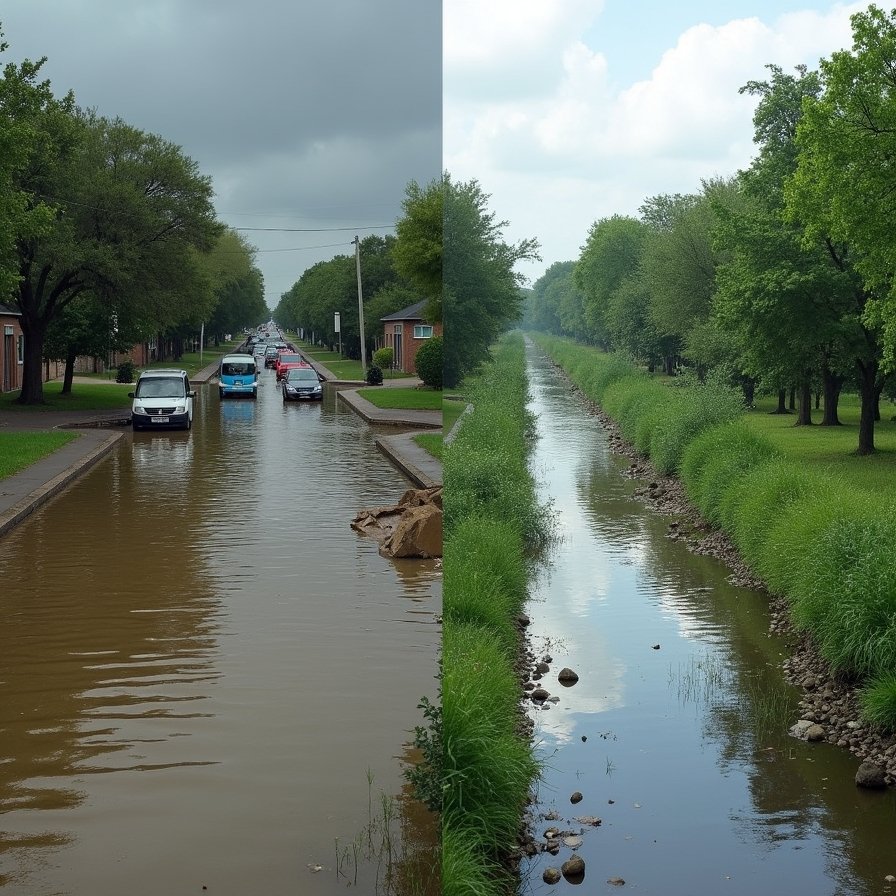Why Texas Must Learn from Dutch Flood Management Now
Every year, Texans brace for the unknown—torrential rain, overwhelmed rivers, and flooded streets. Yet, the frequency and intensity of flooding in Texas aren’t just bad luck. They signal systemic failures in urban planning, infrastructure, and preparedness. It’s time to look abroad for solutions—specifically, Dutch flood management, a global benchmark in flood resilience.
The Netherlands, a country where 26% of the land lies below sea level, has turned survival into a science. In contrast, Texas continues to rely heavily on outdated stormwater systems and reactive policies. While Texans build higher levees, the Dutch have reimagined water as a cohabitant, not an enemy.
Dutch Flood Management: A Model of Living With Water
The Dutch approach doesn’t merely fight water—it partners with it. After the devastating 1953 North Sea flood that killed over 1,800 people, the Netherlands implemented the Delta Works: a world-class system of dikes, storm surge barriers, and floodplains.
Key strategies include:
- Room for the River: Allowing rivers to safely flood predesignated zones.
- Green Infrastructure: Parks that double as retention ponds.
- Floating Homes: Entire neighborhoods built on adaptable, buoyant platforms.
Rather than seal off water, Dutch engineers guide and channel it—preserving ecosystems and saving lives.

Texas Floods Expose the Gaps Dutch Flood Management Could Fill
Texan cities like Houston experience “100-year floods” multiple times a decade. But despite the warnings, the response remains fragmented. Developers build on floodplains. Drainage systems clog with silt. Political cycles delay long-term infrastructure investments.
The Dutch flood management model contrasts sharply with this reactive mindset. Its cornerstone? Proactive, adaptive planning based on science, not short-term profit.
Why Dutch strategies succeed:
- Long-term national water policy
- Collaboration across municipalities
- Commitment to nature-based solutions
- Advanced modeling and early warning systems
Texas, with its sprawling growth and climate volatility, needs more than stronger levees. It needs a cultural shift in how it views water.
How Dutch Flood Management Could Reshape Texas Urban Design
To apply Dutch flood management in Texas effectively, urban planners, architects, and policymakers must embrace a water-centric design philosophy. That means going beyond engineering fixes and rethinking entire communities.
Key applications in Texas might include:
- Water Squares in Houston: Public plazas that store runoff during storms
- Retrofitting highways as rainwater channels
- Wetland restoration in low-lying rural zones
- Floating communities along flood-prone Gulf Coast towns
Texas has the land, the innovation, and the capital. It needs the mindset shift that the Dutch adopted decades ago.

Lessons from Dutch Flood Management for Texas Lawmakers
The transformation of Dutch cities didn’t happen overnight. It required legislation, funding, and above all—vision. For Dutch flood management to inspire change in Texas, leaders must think beyond the election cycle and adopt sustainable water policy frameworks.
Policy steps Texas can take:
- Mandate climate-resilient building codes
- Fund green infrastructure at the municipal level
- Restrict development in floodplains
- Create cross-agency water management councils
- Educate the public on coexisting with water
Dutch governance succeeds because it treats flooding as a national concern, not a local inconvenience. Texas must follow suit.
Checklist: How Dutch Flood Management Compares to Texas Flood Control
| Element | Netherlands | Texas |
|---|---|---|
| Flood Design Philosophy | “Room for the River” (live with water) | “Fight the flood” (divert/block water) |
| Infrastructure Focus | Natural + Adaptive | Concrete-heavy + Reactive |
| Planning Horizon | 50–100 years | 5–10 years or shorter |
| National Water Authority | Yes (Rijkswaterstaat) | No coordinated state agency |
| Citizen Engagement | High | Low |
Why Dutch Flood Management May Be Texas’s Best Hope
Texas doesn’t lack technology—it lacks integration. High-tech sensors, predictive modeling, and FEMA grants already exist. But without a centralized, unified strategy like Dutch flood management, the pieces remain disconnected.
What’s at stake? Human lives, economic stability, and environmental health. As climate change accelerates, the cost of inaction multiplies. Emulating the Dutch means Texans must stop treating floods as rare disasters—and start managing them as predictable, navigable events.
Call to Action: Bring Dutch Flood Management to the Texas Agenda
Are you a city planner, policy advocate, or concerned resident? It’s time to push for change. Start by sharing this article, attending city council meetings, or supporting local resilience projects. Demand legislation that mirrors the foresight.
Together, we can flood-proof Texas—not by building higher walls, but by rethinking how we live with water.
→ Subscribe to our newsletter for more insights on climate resilience, urban planning, and infrastructure innovation.


